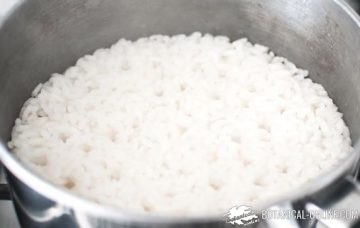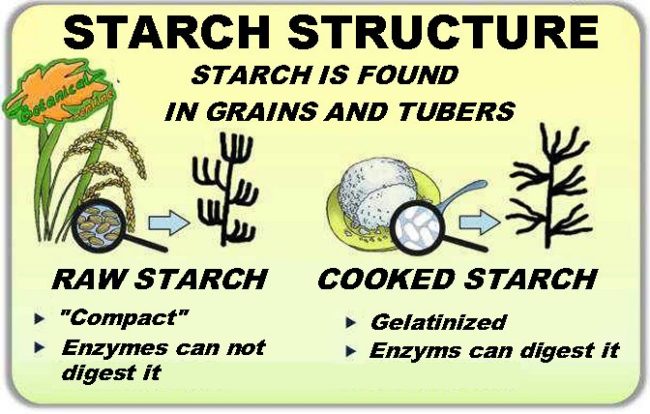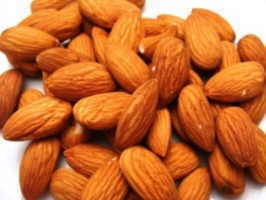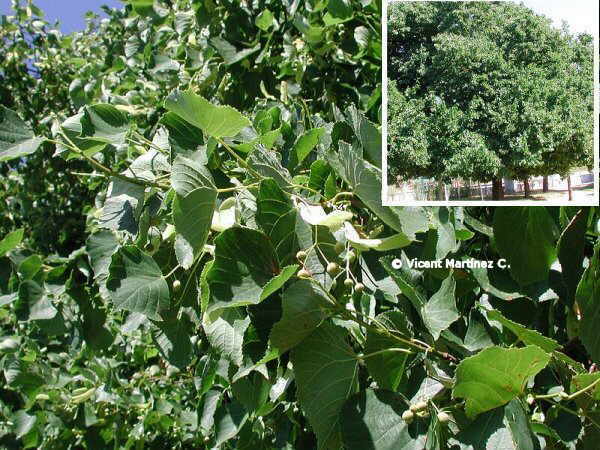What is and what properties does starch present in food?
What is starch?
The starch is a nutrient – which foods of plant origin contain, classified within the complex carbohydrates . Scientifically, it is defined as a molecule formed by the union of thousands of glucose units , which is known as a polysaccharide .

Functions of starch in plants
Starch is the way in which plants store their energy reserves , and is of vital importance for the growth and reproduction of most plant species.
This starch is produced by plants from the carbon they extract from photosynthesis , from carbon dioxide and from water.
Plants accumulate their starches in roots , tubers, and seeds . For example, in parsnips , potatoes and rice , respectively.
Starch structure
The starch is a molecule in a tree that consists of thousands of glucoses linked together.

That is, if starch was a giant pearl necklace , the glucose would be the pearls. Analyzing the large starch molecule, we see that this large necklace is not linear, but has ramifications and its structure resembles that of a tree .
These branches can be amylous or amylopectin units , which are different ways of grouping glucose.
Therefore, starch is a complex carbohydrate , formed by the union of different molecules (amylose and amylopectin), both consisting of glucose, which together make up the starch.
Can we digest starch?
When humans consume starchy plants, such as rice, these carbohydrates are digested by the action of digestive enzymes . These enzymes are found in saliva, and most abundantly, in the intestine.
It should be mentioned that humans can only digest starch from those grains that have been cooked .

Our digestive system can only digest that starch that has been cooked . Otherwise, if starch is consumed raw, digestive enzymes cannot access its glucose chains, which remain “compacted” and cannot be broken. During cooking, the starch granules change their structure and become more digestible.
In the cooking process, starches hydrate and become digestible (starch gelatinization). During this process, amylose swells, transforming into amylopectin, which is more gelatinous. This step is what turns a grain of hard rice into cooked rice, and it makes the difference between pasta al dente , or overcooked pasta.
How is starch digestion?
In the mouth, salivary amylase (an enzyme in saliva) works by breaking down carbohydrates in food, but its effect is short, since it is inactivated when it reaches the stomach.
In the stomach, the starch is not digested , but in this receptacle the proteins of the food are mainly degraded, by the action of gastric juices.
It is in the duodenum , the first section of the intestine with which the stomach connects, where enzyme-rich pancreatic juices (pancreatic amylase) begin to degrade starch molecules. These will be assimilated as glucose throughout its passage through the small intestine.
In the colon, starches that have not been able to be digested (resistant starches) will be fermented by intestinal bacteria , acting as a fiber. Starches have been shown to be an excellent prebiotic , that is, they feed healthy intestinal flora.
Properties of starch
What are the main healthy benefits of starch?
For many years it has been thought that the only function of starch in food was to provide energy. Starch is classified within complex carbohydrates, which are the most consumed energy macronutrient by man , in most diets in the world (except minority diets, such as those of the Eskimos, whose main energy source is fats).
Prebiotic effect of starch
More recently, with the discovery of the importance that intestinal flora receives for health , scientists have realized that starch is a fundamental type of food to feed healthy bacteria in our intestines . These microorganisms, which inhabit the colon, are capable of fermenting starch that is not digested by digestive enzymes and converting it into energy.
Starch in cancer prevention
During the fermentation of starch in the intestine, short-chain gases and fatty acids are produced that increase the proliferation of these bacteria ( prebiotic effect ). These fermentative gases are also protective substances against colon cancer .
The consumption of foods rich in resistant starches or retrograde starches is especially beneficial for the intestinal flora . Due to its structure, resistant starch has been proven to have a high fermentative power and is therefore a fiber with great prebiotic potential.
![]() More information on starch and carbohydrates
More information on starch and carbohydrates
7 December, 2022








